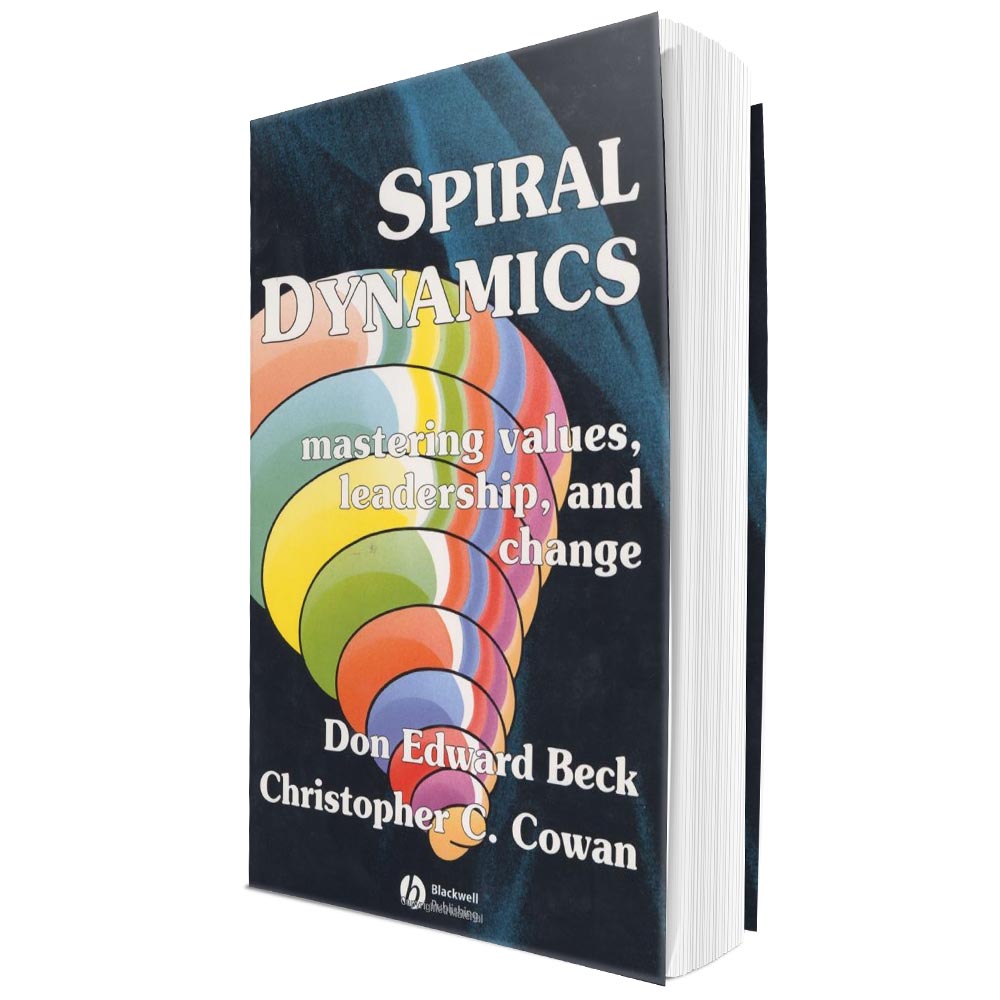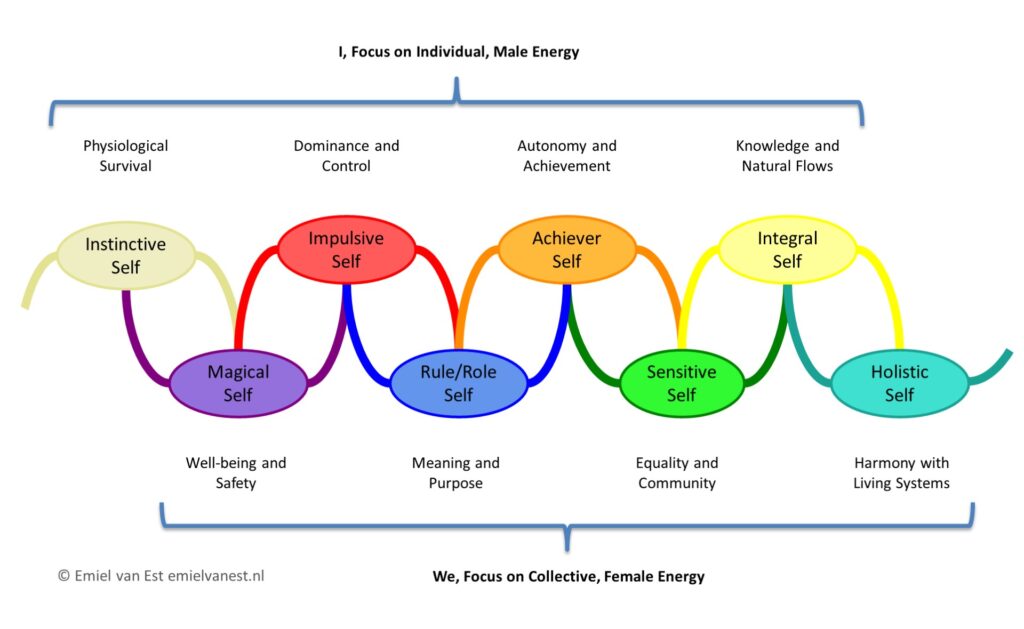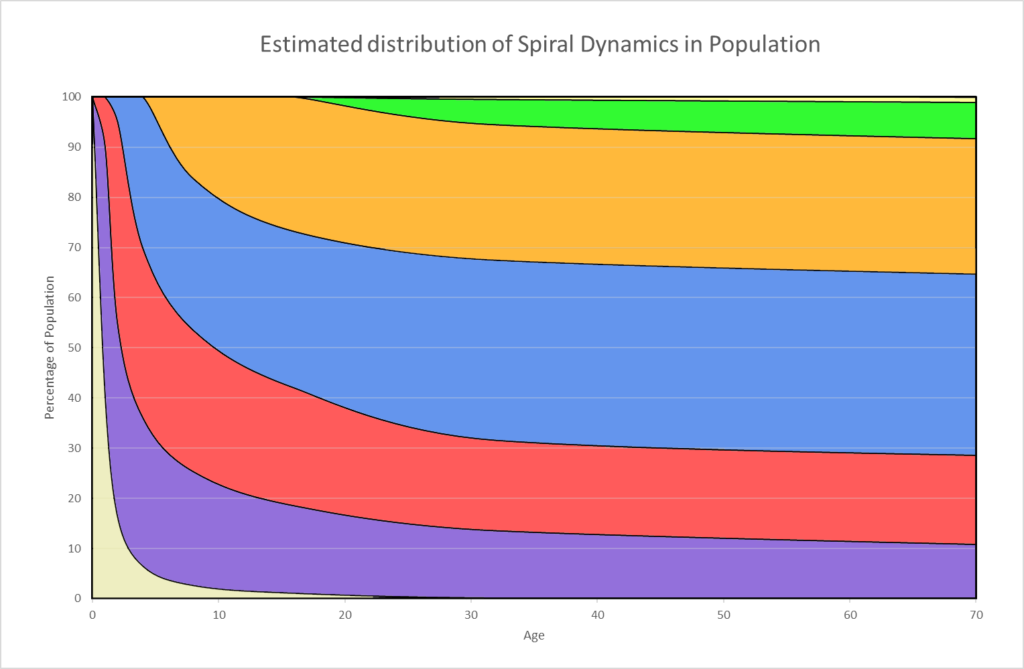If you’re interested in understanding human behavior, psychological development, cultural dynamics, leadership, and communication, spiral dynamics can be insightful.
The Origins of Spiral Dynamics
Clare Graves created a psychological model, originally referred to as the “levels of existence” that identifies stages of development around values. This hierarchy of value structures consists of eight levels that individuals express in their lives. These eight stages build upon each other and are developmental in nature.
Society and organizational culture evolve through these stages as well, since they are a collection of individuals. The culture of a society or an organization will gravitate to the developmental stages of its people, especially the people in a leadership position.
While Abraham Maslow was formulating the hierarchy of human needs, psychologist Clare W. Graves was examining what makes people different in their behaviors, values, and worldviews. Over 20 years of research resulted in what Graves called the “levels of existence”. Questioning thousands of people, he found there are specific stages of development in human values.

Graves passed away in 1986 before he completed and published his work. Grave’s research was picked up by Christopher Cowan and Don Beck who coined the term “spiral dynamics” and published Spiral Dynamics: Mastering Values, Leadership and Change in 1996.
Don Beck later joined forces with philosopher Ken Wilber who integrated spiral dynamics into his work, published in A Theory of Everything (2001), which helped popularize spiral dynamics.
The Eight Stages of Spiral Dynamics
You can see the stages of spiral dynamics as “expressions” of the human experience. Each of us gravitates to a particular stage of development. That does not define us but shows the “center of gravity” that each of us predominantly has while expressing other value structures as well.

Beige: The Instinctive Self (Tier 1)
“Do what you must just to stay alive.”
A newborn baby starts here.
The Instinctive Self is archaic, basic, automatic, and instinctive. It thinks and acts in a needs-driven, wish-fulfillment manner.
Adults having Beige as their Centre of Gravity are, luckily, very rare.
Purple: The Magical Self (Tier 1)
“Keep the spirits happy and the tribe’s nest warm and safe.”
When the survival needs of a newborn baby are met, this stage is active. A close relation is being built between the baby and its primary caregivers.
The Magical Self wants safety and security. It is tribalistic, magical, and mystical. Looks to gods or higher powers with rituals for protection.
For about 10% of adults, Purple is their Centre of Gravity.
The Impulsive Self (Tier 1, Red)
“Be what you are and do what you want. Regardless.”
Towards the age of two, a child starts to discover that it is an individual and develops a desire for independence.
The Impulsive Self drives for power, glory, rage, and revenge. It is egocentric, exploitative, impulsive, and rebellious. The Impulsive Self believes it can take what it wants by aligning with power.
For about 20% of the adults, Red is their Centre of Gravity.
The Rule/Role Self (Tier 1, Blue)
“Life has meaning, direction, and purpose with predetermined outcomes.”
Much of childhood is spent in Blue. It is about learning what to do and what not. Learn what is safe to do and what not. Learn how to navigate the streets and many other rules in society.
The Rule/Role Self seeks the ultimate peace, locked in the battle of good and evil. It is absolutistic, obedient, purposeful, and authoritarian. By following the rules and exceeding its given role, it will know the fundamental truth. Most religions and religious values are rooted in this stage.
For many adults (about 40%) Blue is their Centre of Gravity.
The Achiever Self (Tier 1, Orange)
“Act in your self-interest by playing the game to win.”
An early sense of Orange may be experienced through sports. Most people reaching this stage will get there by studying and building a career. The Achiever Self builds businesses, science, medicine, and most of modern society.
The Achiever Self desires autonomy, achievement, and self-interest. It is materialistic, strategic, ambitious, and individualistic. The purpose of the game is to compete and win: material pleasure, acquisition, and the advancement of civilization. How? By learning how to excel at everything it does, setting and achieving goals, measuring success, and so on.
For many adults (about 30%) Orange is their Centre of Gravity.
The Sensitive Self (Tier 1, Green)
“Seek peace within the inner self and explore the caring dimensions of community.”
The Sensitive Self lives by connection, community, egalitarianism, and consensus. Green appreciates diverse views and focuses on the needs of the many.
For about 10% of the adults, Green is their Centre of Gravity.
The Integral Self (Tier 2, Yellow)
The theme of the integral self is “Live fully and responsibly as what you are and are learning to become.”
The integral self looks to become whole and synthesize all the levels that came before it by awakening as many lines of intelligence as it can and integrating them into a cohesive whole. The integral self is systemic, ecological, flexible, and conceptual. By learning and adapting it can incorporate the levels that came before it.
Few adults have Yellow as their Centre of Gravity.
The Holistic Self (Tier 2, Turquoise)
“Experience the wholeness of existence through mind and spirit.”
Compassion and harmony guide turquoise. It seeks peace in an incomprehensible world by developing a more profound receptivity of multi-dimensional perspectives without privileging any of them.
Adults with Turquoise as their Centre of Gravity are very few.

Tier 1 vs Tier 2: The Importance of Integration
From the perspective of our psychological development, the most critical thing about Grave’s model is understanding the difference between the two tiers.
The first tier of spiral dynamics includes all the stages from the Instinctive Self to the Sensitive Self. When your center of gravity is in one of these six stages, you have a strong ego and you tend to identify exclusively with that value structure.
So, for example, if your center of gravity is in the Achiever Self, you likely identify yourself as an achiever and tend to believe that the values of achievers—pleasure, material things, acquisition, achieving goals, money, capitalism—are what’s most important and that everyone should value these things too.
The second tier represents a radical shift in how an individual perceives reality: there is an expansion of consciousness. In tier 2 we become able to perceive these stages of development and their related value structures. We can understand the benefits of each stage as well as their inherent limitations. Instead of a dualistic view of making a value structure “right” or “wrong” we can begin to integrate each of these stages within ourselves.
The Dance of Masculine and Feminine Energies
One particular aspect of Grave’s model is how it illustrates the constant tension between masculine and feminine energies; between the focus on the individual and the collective.
The masculine energy seeks autonomy and independence. The feminine energy drives toward communion and togetherness. Each stage within spiral dynamics toggles between these two.
The shift in emphasis goes back and forth between masculine and feminine, individualism and collectivism, over and over again. Holding the opposites together is no easy feat in this continuous dance.
How Spiral Dynamics Explains Human Conflict
Most adults have a Center of Gravity in either Rule/Roles, Achievement, or Sensitivity. This helps explain interoffice, political, and marital conflicts.
In an “ideal” social and cultural environment, we would naturally progress through these stages of development in our first two decades of life. This natural progression, however, rarely occurs. Instead, individuals tend to get stuck or fixated on a particular stage of development and subconsciously struggle to move beyond it.
Each subsequent stage of development stems from dealing with a system of greater complexity. The bigger and more complex a system becomes, the more can go wrong.
For example, someone seeking achievement perceives the world through a different lens than someone driven by equality and community. The Sensitive Self (Green) tends to resent, achievers because the achievement value structure (Orange) hasn’t developed a value for human care or the environment. Achievers are mainly interested in personal acquisition and growth for growth’s sake.
Individuals at the green stage (sensitive self), however, forget that a part of them is driven by achievement values too. They moved through the Achiever stage and saw that they could achieve more if there would just be more cooperation.
Achievers compete. Green individuals seek cooperation. These two have a difficult time coexisting. Even though green individuals want cooperation, they tend to be dissociated from their achievement stage and are unaware of how they want to be victorious too.
Including versus Dissociating
In healthy development, Wilber often explains, we “transcend and include” the level that came before it. We develop to a higher stage of consciousness while incorporating the essential aspects of the prior stage. But this isn’t what happens. Instead of “transcending and including,” we “transcend and disassociate.” That is, we adopt a later stage of development while cutting off and discarding the previous structure.
The fundamental religionist at the Rule/Role self may become an atheist when they enter achievement mode. Or, an Achiever may become an anti-capitalistic environmentalist.
The Shift Towards Integration
Just becoming aware of these stages of consciousness helps considerably. Without a language for these stages, our conscious minds don’t have a handle on what’s going on. Once you’re familiar with the eight stages of this model, you’ll begin to notice their expressions both within yourself and those around you.
The primary goal for self-development is to establish our center of gravity in the second tier: integration (yellow). The Integral Self is “transpersonal” in that we have included the personal stages that came before it while also moving beyond them. The jump from the Sensitive Self (green) to the Integral Self (yellow) represents a significant shift in consciousness.
The levels below integration (Tier 1) are expressed relative to others. There is a radical shift to the second tier where our focus isn’t on the personal but on the transpersonal. The quest becomes to “live fully and responsibly as what you are and are learning to become.”
By awakening as many intelligences of body, mind, heart, and spirit as we can, we develop the innate potentials that are currently lying dormant within us.
Implications for Leadership
The key to effective leadership is to understand where you are and where your team members are in their development. To become better leaders, we must develop the second-tier integrated structures in our consciousness so we can then help our team members grow to higher levels of development as well.